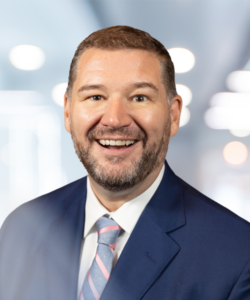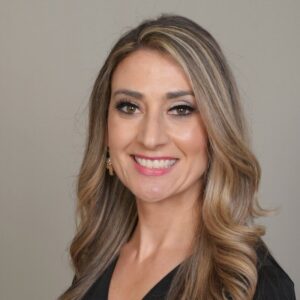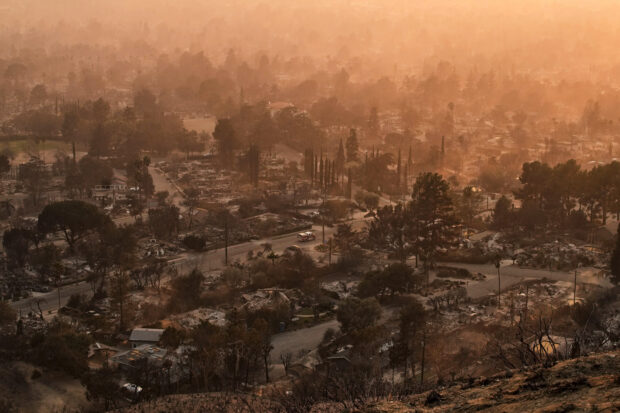As wildfires continue to wreak havoc across California, experts say one part of the recovery process that is proving particularly challenging for high-net-worth homeowners is simply accessing insurance coverage.
“Some things that we’ve seen in the past with hurricanes are that a hurricane will happen, a moratorium will be put in place, but that moratorium will stay in place for six, nine months, a year,” said Jason Ott, president of Aon Private Risk Management. “They can be in place for a very long time while the insurance company figures out what their strategy is going to be moving forward.”
Ott described a moratorium as a situation in which an insurance company decides to stop writing business in a particular ZIP code until it can gain a better handle on what is happening in the wake of a disaster.
“In the short term, we’re going to see moratoriums put in place [as a result of the California wildfires], and rightfully so,” he said. “But in the meantime, we still need to place coverage for our clients. So, we’re going to be having clients that will want to rebuild or who will be purchasing new locations, and I think we’re going to have difficulty securing coverage in LA County and Southern California in the short term for anyone who has that need.”
Diane Delaney, executive director of the Private Risk Management Association, said that even if coverage is available, type and flexibility of coverage could change if it’s in the non-admitted space rather than with admitted carriers. Coverage could be further restricted if it moves to the surplus lines side, Ott added.
“If carriers stop writing in the admitted marketplace or there is less availability in the admitted, it’ll go to the surplus lines side, and then we’ll see restrictions,” he said. “So, the coverage will not be as robust.”
He said this means limits could be capped or guaranteed replacement cost may not be available.
“We’re going to have to strike that balance of finding the right coverage mix for both sides so that [insurers] can remain viable in California and our clients are getting the solutions that they need,” he said.
Another challenge regarding coverage availability is the additional living expense coverage that is built into a lot of policies, Ott said.
“In a lot of policies, there’s a coverage for you to live somewhere while your home is being restored or rebuilt,” he said. “But there have been so many homes that have been damaged, it’s going to be very difficult for our clients to find a suitable place to stay.”
He said this could drive up the prices of real estate in the rental market, which could raise these claims even further.
“Additional living expense on some policies is unlimited. In other cases, it is capped,” he said. “So, you could run out of that before your home is rebuilt or fully restored.”
Along those same lines, the time that it takes to rebuild depends on permits and availability of builders and resources.
“That’s going to take some time, too, because there’s going to be such a demand in Southern California for all of those things, so the timelines are going to be pushed back,” he said.

Delaney said in the face of these challenges, it’s important for homeowners to maintain communication with their broker or adjuster.
“I think it starts with having a good relationship with your broker, or if you’re in a direct market, with the insurance carrier and with your adjuster, and understanding what the coverage is that you have,” she said.
In a situation where there’s a total loss, she said to keep communication open, take photos, and begin taking inventory as soon as possible. She added that knowing who to call immediately after a disaster strikes is an important first step as well.
“It’s just really the importance of knowing who to go to at a time like this,” she said. “You know, there are so many people not knowing who to call. Is it their insurance carrier? Is it their broker? And now is really the time where you rely on your independent agent or broker to advise you on what next steps to take. I think that’s really important at a time like this, and hopefully [it] is good preparation for the future to think about who do I have to call in a time of emergency?”
As insurers and homeowners alike continue to grapple with the after-effects of these devastating wildfires, Ott said he sees a move to the non-admitted market or surplus lines as a continued trend.
“What that does is it gives the insurance company the ability to manuscript policies so they’re not admitted through the state,” he said. “They have the ability to put certain sub-limits in place, to put higher deductibles in place, that might have a different impact on premium versus the filed rates. So, there’s a lot of creativity and flexibility in the excess and surplus space.”

Another change that will likely occur is where and how properties are built, he said.
“I think it’s going to be a combination of the insurance industry driving that to want to insure the best properties, and it’s also going to be local governments who will need to put items in place, codes, regulations to change it so that we don’t continue to have these same things moving into the future,” he said. “What is it going to look like to rebuild in California? I think consumers should also be thinking about that as they’re thinking about rebuilding their home. They need to be thinking about ‘how can I build this home to be as resilient as possible so this never happens to me again?'”
Photo: Smoke lingers over a neighborhood devastated by the Eaton Fire, Thursday, Jan. 9, 2025, in Altadena, Calif. (AP Photo/John Locher)





















 AI in Property/Casualty Insurance: Why Trusted Data Is the Missing Link
AI in Property/Casualty Insurance: Why Trusted Data Is the Missing Link  Hong Kong Fire Reveals Contractor Safety Breaches, Residents’ Revolt
Hong Kong Fire Reveals Contractor Safety Breaches, Residents’ Revolt  How One MGU Grew Fivefold When Capacity Fled Cat-Prone Property Markets
How One MGU Grew Fivefold When Capacity Fled Cat-Prone Property Markets  Police Recover Swallowed Fabergé Pendant 6 Days After it Was Stolen
Police Recover Swallowed Fabergé Pendant 6 Days After it Was Stolen 





